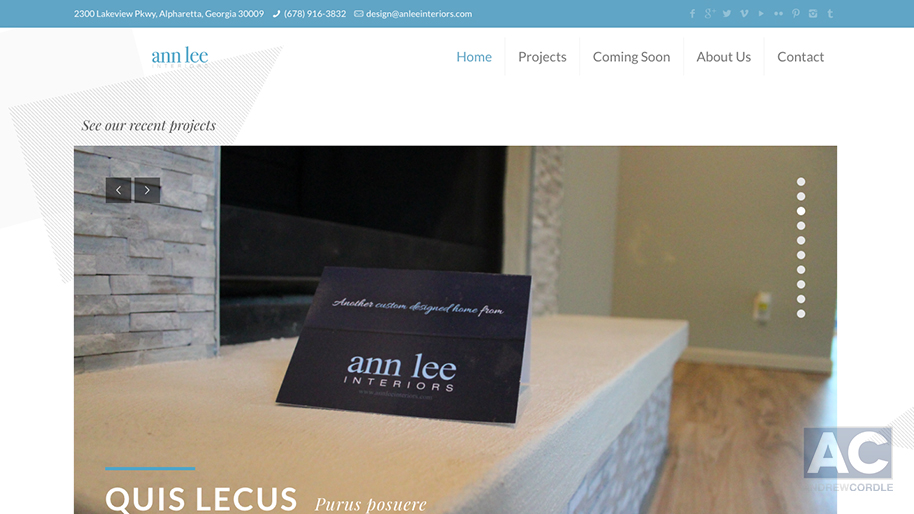
Those who consistently make money in real estate know the market. They know the location and the history as well as what new developments are planned. They know the transportation, the schools and everything about the area where they invest. In short, they have to know it all. As I was touring one of my Atlanta flips recently, I was heading upstairs into one of the bedrooms. Darkness ruled the upstairs as electricity had been turned off years before. This home had been unoccupied for the better part of a decade. As I walked blindly into one of the dark upstairs bedrooms, I felt the floor disappear. Luckily, I stepped back in time to observe a huge, gaping hole that allowed me to stare directly into the living room below! I was about 3 inches away from being seriously injured. Thank God that I stepped back in time. After a quick laugh, I regained my composure and my heart slowed to it’s normal beat pattern. I had an epiphany – sometimes when you think you’ve got real estate investing by the horns, you realize that something as simple as a flashlight almost ruined your career! It was right then and there that I realized there is a list of important items that every real estate investor should have with them in their vehicle. I have compiled a list of 10 items that every investor MUST have with them! 1. Mobile Office – portable lap-desk with storage for both files and tools 2. Hand Sanitizer – keep your hands clean 3. Camera – for taking photos when out and about looking at houses 4. Business cards, flyers, door hangers etc – great to have on-hand for marketing 5. Smart Phone- for it’s camera, video, web references like Redfin, Homescan, etc – also use for taking business calls, emails, and market research on the go 6. Ipad- TinyScan, EverNote, DocuSign: great tools for organization and executing business documents. Also use for scanning and e-signing 7. Blank contracts – always good to be prepared when talking to people and driving for dollars. Don’t pass up an opportunity to put house on contract on-site 8. Headphones – safe hands free driving, sound clarity, and noise reduction 9. Laser or tape measure – taking measurements when creating layout for house or trying to fit furniture 10. Blueprint paper, property analysis – important documents when building or adding square footage to property. good to analyze the numbers to determine if deal is profitable I can assure you that if you keep this list of items with you at all times, you will never be behind the power-curve. Now, some of you may have caught-on, others not…but there is one last item that we should add to this list. Let’s call it...
Read More »

Many real estate agents are intimidated merely by the thought of shooting their own photography. It’s easy to understand why they feel that way. Quality real estate photography takes knowledge, the proper equipment, and most importantly, practice! With so many different equipment types and photo-techniques available, getting started can seem like an overwhelming task! If you have been keeping up with our previous posts, you know by now that it is not the camera that determines a good photo, but the photographer. There are a variety of different cameras and lenses for a person to choose from, but there is a different tool for every job, and a different budget to work with every time. Whether you have a $200 point and shoot camera, a smartphone or a DSLR, its all about taking a good photo. That being said, certain cameras have their limitations. Different lenses and cameras are made for different uses. I want to start with the basics. So here’s a little camera shot to try out. Go to your kitchen and try to take a photo with your smartphone. You may find out that you aren’t able to see your whole kitchen unless you start stepping backwards! So this is where a wide angled lens comes in. There are obviously advantages to using a camera with a wide-angled lens: 1. It shows more of the living space within the home and provides a better overall view of the exterior. 2. It shoots smaller interior spaces like bedrooms and bathrooms without being forced to back up all the way into room corners. 3. It gets good shots of the front of the home without having to stand so far back that you’re standing in the middle of the road. If you’re unsure of which camera to get, go with a more affordable option first, then upgrade later as your skills improve. There are many affordable digital cameras out there that can make a huge difference in your real estate photography. And if money is tight, use sites like Ebay, Amazon, or Craigslist to get quality used equipment. Just don’t forget your wide angled lens! But if you’re limited to your smartphone for pictures, there are options out there that will help you improve your shots. Try the Olloclip. (http://www.olloclip.com) This converts your smart device to have a wide angled lens. If you want to search for off brand adapters you can find a variety online. A very small investment can really expand your real estate photos! Your picture worth a thousand words will evolve into thousands of dollars in profit if you do it correctly! ...
Read More »

When teaching our students how to invest in real estate, one focus is our brand. When Ann Lee was founded, as with any new business, there was a multitude of decisions we had to make. One thing was crystal clear. We wanted our buyers to have a different experience. We wanted to set ourselves apart in the marketplace. Frankly, the majority of flippers were all beginning to look the same. It was getting extremely boring to be a flipper and have your product stand out. We changed that quickly! We created a brand called “Ann Lee Interiors” and built our own army of dedicated agents, lenders, contractors and employees who follow and promote our brand. As soon as a potential buyers walk through the front door, we wanted to give them a unique buying experience! We take our buyers on their own custom journey. During that journey, every single small detail is important. It’s the little things that make a difference. Things like custom Ann Lee labeled house keys, custom brand postcards and small customized pop-up promotional cards spread throughout the home. When you’ve built your brand, you’re in-turn customizing every single flip! When you customize the home and the home-buying experience, you have just ensured that your potential buyers feel special. Your product, in turn, stands out from your competitors. You may ask, “what sets Ann Lee Custom Homes apart from their competitors”? Most real estate investors would never share their secrets with the public. We’re different! We want to share our wealth of knowledge to help make you more successful and profitable when it comes to your real estate investment(s). While I do not wish to bog you down with details right now, there are 5 simple ways to ensure that your house stands-out: Be different from your competitors It’s not rocket science! Every buyer has an mental picture and checklist of exactly the type of house that they want. Make your investment stand-out by giving the potential buyer what they want. Instead of what you want or is the least expensive. It needs to look like a custom designed home rather than a home designed by a contractor, or narrow-minded investor! Be aware of how the potential buyer perceives you Our buyers perceive us as custom home designers rather than flippers/investors wanting to earn a quick buck and move onto the next investment without putting any thought or pride into their flip. Our buyers see our homes as ones that they are eager and excited to purchase. Rather than a house that they are just “agreeing” to buy. Again, ask yourself this, “How does my potential customer perceive me? Do they perceive me as a “flipper” or as a “custom home designer”? Tile is “art” not “flooring” Most investors consider tile or laminate floors simply as “flooring.” We’re different –...
Read More »

Author Laurence Gonzales writes, “Everyone who dies out there dies of confusion. To survive, you must find yourself. Then it won’t matter where you are“. Gonzales was writing about surviving when one is lost in the woods/wilderness. But the man who abandons his family to pursue a fling or abandons his career because of anger or bitterness towards the boss or his co-workers is also “lost.” So is the entrepreneur whose vision has taken him far into the woods of financial debt or managing staff and employees and placating nervous investors. When we feel that prickly gut-sensation that we are where we’ve never been and do not know how to navigate to our destination or back to where we felt safe, we begin to thrash. A person lost in the woods may stumble around blindly, trying to remember a familiar landmark, but the trees all look alike. The disorientation gives rise to panic. “Research,” says Gonzales, “suggests 5 general stages a person goes through when lost”: 1. Denial – We simply can’t imagine that we don’t know how to go from point “A” to point “B.” Whether it is geographically, morally, ethically, maritally, or financially. 2. Frantic Urgency – This is when we are most dangerous to ourselves and others. In life guarding, we were taught that drowning victims will grab anything near them and try to stand on top of their rescuers, thus drowning both themselves and their rescuer. This is often when we run in blind panic, usually into deeper trouble. 3. Misguided Strategy – After exhaustion or injury, the emotions develop a quick and improper plan to get back to safety. The plan won’t work because it assumes we know where we are and what we must do to get out of trouble; but we don’t! Our mental compass is confused and we make further poor decisions. 4. Further Deterioration – this happens mentally and emotionally as the plan fails to produce. 5. Resignation to the situation – This is where one either succumbs to the injuries or settles down to “find himself” and develop a realistic game plan. These 5 stages happen to businesses. Circuit City lost its way and died before it got out. Xerox lost its way in the 70’s and 80’s and never has come out of the woods yet. Target got lost in the woods last year with the massive identity theft. They formulated a recovery plan, but they’re still in the woods. JC Penney got terribly lost in the past several years, but seems to have discovered a survival plan and may emerge from the wilderness soon. It is so easy to become lost. Inattention to changing markets, neglect of a beautiful marriage, focusing on the vision of trendy new ideas while failing to notice a wobbly bottom line…. the ensuing panic...
Read More »











